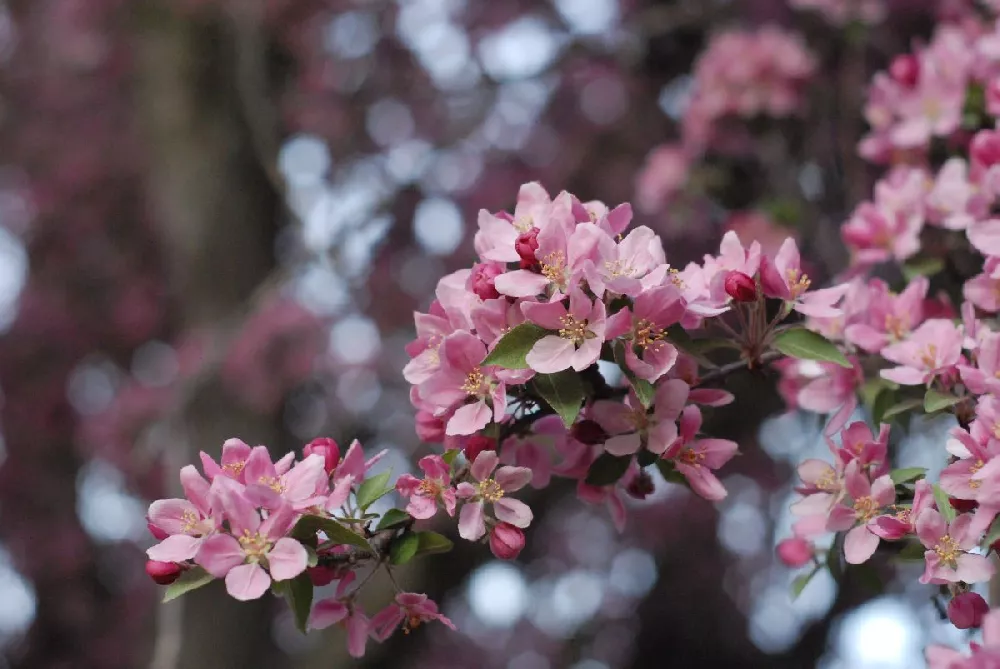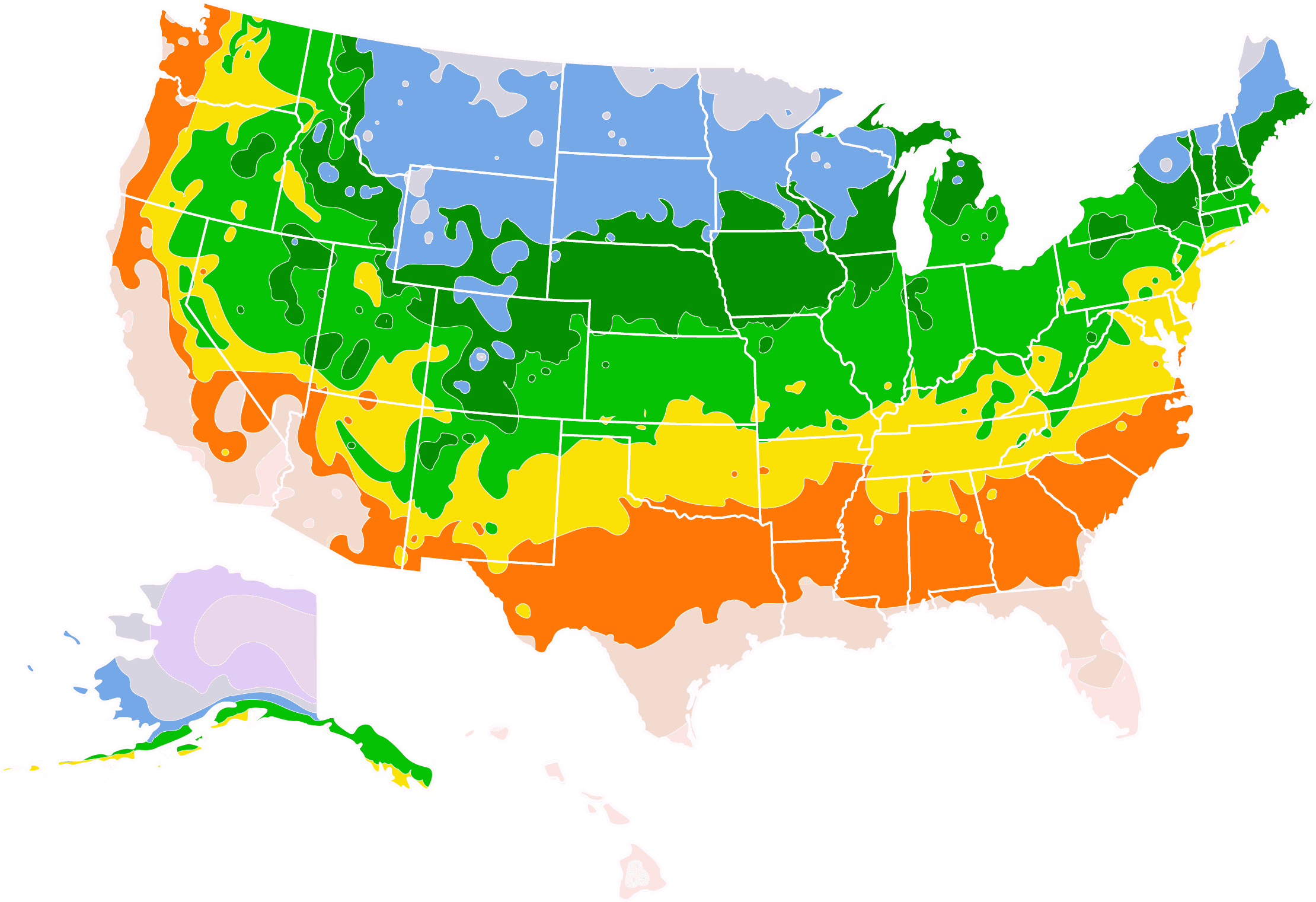- Home >
- Flowers >
- Trees and Plants with Pink Flowers >
- Coralburst® Crabapple
Coralburst® Crabapple for Sale - Buying & Growing Guide
- Ships in 1-2 days
- 1-Year Warranty Eligible
- Pots or accessories are not included unless specified in the product options.
Shipping Details:
Once your order is shipped, you’ll receive an email with a tracking number and estimated delivery date. Most orders ship immediately, but some items are seasonal and may only ship in spring or fall. These products are noted on the website.
The Coralburst® Crabapple, or Malus ‘Coralburst,’ is a small tree with a compact form that allows it to add vibrant colors to planting areas of nearly any size. Each spring, this tree blooms with rose-colored flowers, which eventually develop into attractive bronze fruits in fall. The other major benefit of growing the Coralburst® Crabapple is that it is very adaptable to different soil types and proves to be easy to care for throughout its life, even if you have minimal gardening expertise.
- The Coralburst® Crabapple has a compact, symmetrical form.
- The bright pink blooms of this plant are numerous.
- The Coralburst® Crabapple is adaptable and very easy to care for.
Plant Care
Sunlight

The Coralburst® Crabapple will grow best in areas of full sunlight.
Watering
During establishment, water this plant once per week or more. After establishment, water once per week during droughts and hot weather.
Fertilizing

Use a balanced fertilizer once per year in the early spring.
Planting and Care
Planting instructions
As long as you plant your Coralburst® Crabapple in a location that receives full sunlight and has soil with decent drainage and a moderate amount of nutrients, it should perform well. To plant this tree, you should begin by digging a hole that is as deep as the root ball is tall and at least twice as wide. Then, loosen the root ball and the sides of the hole to encourage the roots to spread. Finally, backfill the hole and cover the area with a healthy layer of organic mulch.
Watering and nutrients
Both the watering and fertilization routines for a Coralburst® Crabapple are quite straightforward. Feed this tree each year in early spring with a balanced fertilizer. Water your Coralburst® Crabapple about once per week or more during the first year of growth. Following the first year, you can reduce your watering schedule. For the rest of this plant’s life, you’ll need to supply water only about once per week during the hottest parts of summer and any prolonged droughts.
Pollination
When the Coralburst® Crabapple blooms in spring, its flowers will not only impress you and anyone who visits your garden at that time, but they will also attract plenty of pollinator species. These insects will feed on the nectar the flowers hold and conduct pollination simultaneously. Since the Coralburst® Crabapple is a self-fertile tree, it can pollinate itself, meaning you need only one tree to produce fruits. Upon successful pollination, your Coralburst® Crabapple will develop a set of small, round fruits that have a bronze color for many weeks.
Pruning
In keeping with the theme of easy maintenance, the Coralburst® Crabapple is a plant that requires very little pruning. Deadheading during the bloom period will help this produce more blooms. You may also perform light pruning during the dormant winter period to remove any branches that are dead, damaged or diseased. Otherwise, you won’t need to prune to control this plant’s size or spread, and it will typically grow healthily with a neat overall form all on its own.
Pests, diseases and animals
In general, crabapple trees have multiple pest and disease threats that they may face throughout their lives. One of the most common diseases that these trees face is apple scab, which causes foliage discoloration and fruit deformation. Crabapples can also encounter issues with cedar apple rust and common insect infestations, including scale, mites and aphids. However, the good news is that the Coralburst® Crabapple typically does not face as many pest and disease issues as other crabapples.
Harvesting
It is most common for people to grow the Coralburst® Crabapple, or any other crabapple, strictly for ornamental purposes. As such, most people do not concern themselves with harvesting this tree’s fruits, even though they are technically edible. Crabapples are safe to eat in their raw form but often have a sour taste, which is why it’s typically better to incorporate them into jams and similar recipes. If you want to try eating crabapples for yourself, you can remove them from your tree by hand during the fall and even into the winter months.
Achieving maximum results
The Coralburst® Crabapple can develop suckers that emerge from the base of the trunk. When pruning, you should always remove these suckers as they do not contribute to this tree’s overall form and will use energy that could have gone to more important branches. You should also be sure to prune lightly in general since crabapples set their flower buds on old wood. Be careful not to remove too many stems and branches when pruning this tree during its dormant phase to preserve as many flowers as possible.
FAQs
How large does a Coralburst® Crabapple grow?
The Coralburst® Crabapple grows to be about 8 to 10 feet tall and about 10 to 15 feet wide when it is mature. This size makes the Coralburst® Crabapple one of the smallest of all crabapple varieties. Only cultivars such as the dwarf Sargent crabapple, which grows to only eight feet or less, are smaller than the Coralburst® Crabapple. This makes the Coralburst® Crabapple one of the best ornamental tree options for smaller planting areas.
Does the Coralburst® Crabapple attract wildlife?
The Coralburst® Crabapple will not only make your garden look fantastic but will also contribute to your local ecosystem. In the spring, the blooms provide nectar to important pollinator insects, including honey bees. Later in the fall, birds and small mammals will arrive to feed on the fruits that dangle from the branches. In fact, if you hope to harvest the fruit, you should be wary of birds and other critters getting to the fruits before you have a chance to.
Are crabapples toxic to animals?
The flesh of a crabapple tree's fruit is entirely safe to eat and does not contain any toxic qualities. However, the same is not true of the seeds, stems and leaves of a crabapple tree. These plant parts contain cyanide, which is dangerous to anyone who eats them, including both people and their pets. So, if you grow a crabapple tree in your yard, monitor your pets and any children that go near it to prevent any health concerns.
Compare Similar Products
You can't add more Product Name - Product size to the cart.
OK









